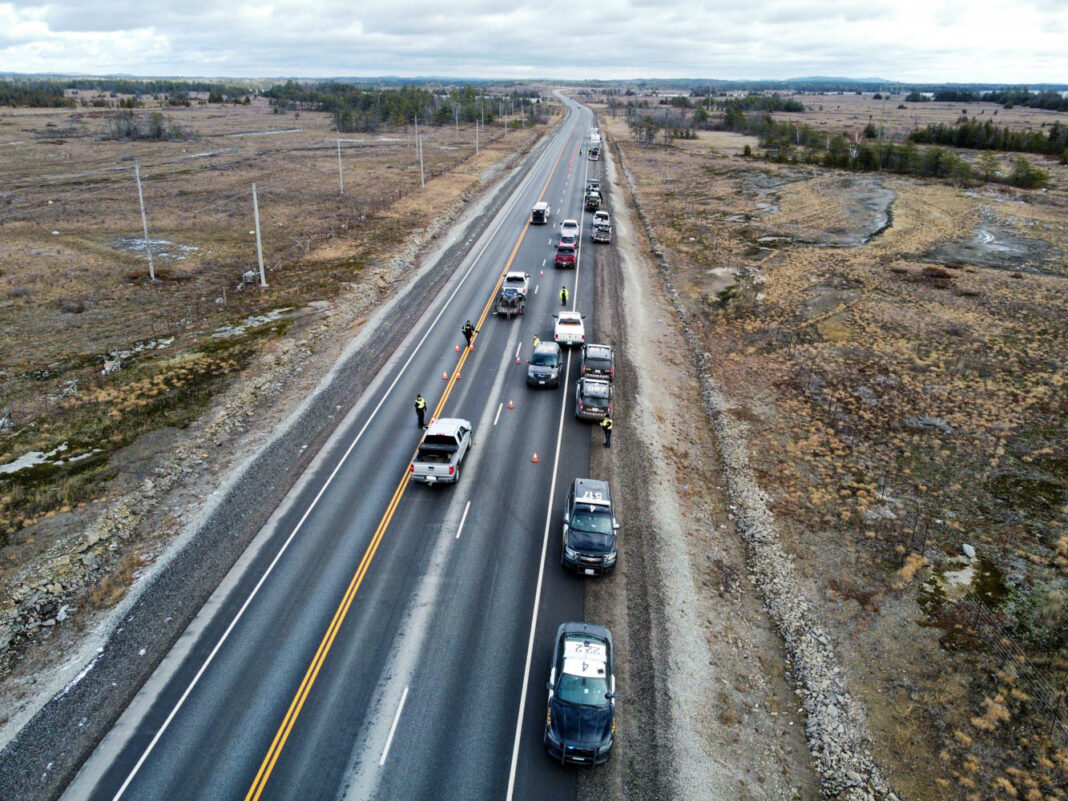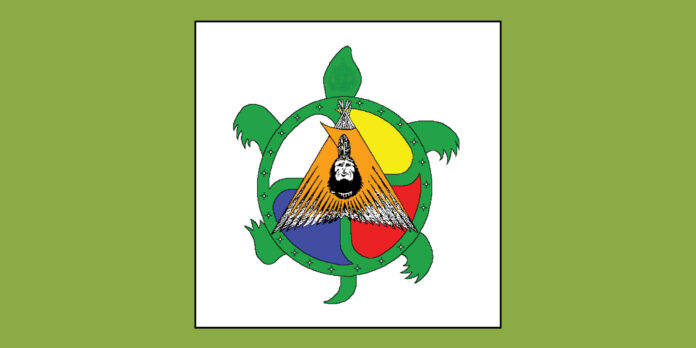MANITOULIN—The number of charges laid by the Ministry of Natural Resources and Forestry (MNRF) during this year’s annual rifle deer hunt increased substantially from the 2022 hunt season.
“The number of charges this year during the hunt on the Island were 53 (compared to 28 in 2022),” said Andrew Chambers, strategic development and issues management coordinator, enforcement branch with the MNRF told The Expositor last week.
Mr. Chambers explained, “Every year, our priority during the hunt is safety. We are in the field to ensure everyone, from hunters to dog walkers and property owners are safe in their surroundings. This year, the most prevalent charges laid were for failing to wear hunter orange while hunting, which is a violation of Section 26(1) under Ontario regulation 665/98 made pursuant to the Fish And Wildlife Conservation Act. This charge was issued eight times during the rifle hunt on Manitoulin Island.”
“In total, we issued 25 Part 1 offences for safety related issues during the hunt, such as failing to wear a proper helmet, having a loaded firearm in a conveyance, possessing a firearm at night, hunting with a gun without required accreditation and having care of control of a motor vehicle with an open container of liquor,” said Mr. Chambers. “Other charges were found to come from hunters not carrying their proper licences or tags, or invalidating and attaching the tag on the deer. All hunters using a firearm to hunt must carry their license summary which shows their valid deer licence, their tags, their landowner consent form as well as their possession acquisition license at all times.”
Mr. Chambers explained, “Once the deer is harvested, the hunter must immediately invalidate the tag and attach it to the ear or the antler in a manner that allows a conservation officer to read the information on the tag, as well as not destroy the tag.”
“In total, conservation officer gave out 127 official warnings (32 in 2022) to hunters during the rifle hunt,” said Mr. Chambers. “Some examples of these warnings included failing to carry documentation while in possession of a gun for the purpose of hunting, hunting without having licence on your person, hunting big game with no licence, for not having their permission slip properly filled out, a few for failing to invalidate tag and for failing to properly attach invalidated tag. As you can see, many of our warnings were not related to safety, but instead related to the administration portion of the hunt.”
During the hunt, four firearms were seized. Two firearms have been returned and two are still pending, said Mr. Chambers. The reason for the seizures included hunters not having their possession licence while being in possession of a firearm. In these instances, the firearms were seized since there was no one with a valid possession acquisition licence available to receive the firearms and either have been or will be returned to a person with their licence.
Mr. Chambers further explained 20 deer were seized during the week of the hunt. “The deer were seized for many reasons, some examples included not having a tag attached, for the tag not being invalidated or for the wrong tag being attached to the deer. During the week, we had seven seized deer that were donated to Gwekwaadziwin Miikan, which is a youth treatment centre out of Aundeck Omni Kaning. We had two deer donated to the United Chiefs and Councils of Mnidoo Mnising out of M’Chigeeng, eight deer donated to the band office of Wiikwemkoong and three deer to Shkagamik-Kwe Health Centre in Sudbury.
Mr. Chambers said, “Overall, the hunt went well. We were able to speak to a lot of hunters on the Island and answer any questions they had for us. Since the number of tags that were allocated for antlerless deer went up this year, there were more successful hunters, therefore more people were out this year. With more staff, we were able to contact more people throughout the week, which helped us learn more about how the hunt went. As we checked hunters in the field and leaving the Island, it seemed that some locations were reporting seeing lots of deer, and some locations having seen not a single deer in their entire week at camp. This seems to be a recurring event over the years.”
“Compared to last year, it appears from our contacts that more does were harvested than bucks, and the bucks that were harvested during the rifle season were smaller in comparison to previous years,” said Mr. Chambers.
“This year we heard of more of a consistency in deer sightings and harvesting around the Island,” continued Mr. Chambers. “There was no real trend for where the deer liked to be. Some hunters were filling their tags in the first few days, and then those from across the street had not seen a single deer all week. It did seem, however, that everywhere we went there were many deer that were harvested in each area, and less concentrated in one.”
“The number of conservation officers changes every year and sometimes changes throughout the week of the hunt. In total we had 21 officers on hand throughout the week,” said Mr. Chambers. “Some officers stayed for a few days, some officers stayed for the entire week and some worked solely on the water in order to patrol the other islands in the area that are in wildlife management unit 43A or 43B but are not connected to the mainland of Manitoulin.”
The Ontario Provincial Police (OPP) organized a four-and-a-half-hour check station which included the OPP Snow-Vehicle, All-Terrain Vehicle and Vessel Enforcement Team, the Ministry of Transportation of Ontario (MTO) and the MNRF. The check station took place on the north end of the swing bridge on Highway 6 on Thursday, November 24. There were 750 vehicles that drove through the check station. Two hundred vehicles were inspected by the MNRF for participating in a regulated activity, where eight deer were seized, one rifle and related ammunition was seized, six deer tags were seized. There were five Part III investigations, and four provincial offence notices were issued. The OPP/MTO issued three Highway Traffic Act Provincial Offences Notices, gave one warning and conducted 31 mandatory alcohol screening tests.
“Thankfully, no injuries were reported to the conservation officers for hunting-related accidents during the hunt,” added Mr. Chambers.





